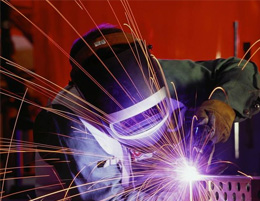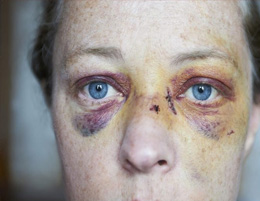Eye Library / Eye Safety

Eye injuries affect more than one million people every year. Almost 70% of the accidents that caused eye injuries are resulted from flying or falling objects or sparks striking the eye. Contact with chemicals caused one-fifth of the injuries. Other accidents were caused by objects swinging from a fixed or attached position, like tree limbs, ropes, chains, or tools which were pulled into the eye while the worker was using them.
It is estimated that 90% of eye injuries can be prevented through the use of proper protective eyewear. To prevent eye injuries we should do the belows
AT HOME / OUTSIDE
• Wash your hands after using household chemicals.
• Ensure there are no sharp corners on the edges of furnishings and home fixtures.
• Wear chemical safety goggles when using hazardous solvents and detergents, and do not mix cleaning agents around or near your child.
• Turn spray nozzles away from your face and the faces of others.
• Read and follow directions when opening bottle-tops (i.e., wine, carbonated beverages).
• Read and follow directions when playing games and operating equipment.
• Provide lights and handrails to improve safety on stairs.
• Keep paints, pesticides, and fertilizers properly stored in a secure area.
• Make sue you and your child wear recommended protective goggles, helmets, and safety gear during the appropriate activities.
• Use guards on all power equipment.
• Make sure your child's eyes are protected either by a wind-brimmed hat or by wearing ultraviolet (UV)-protective sunglasses.
• Teach your child to never look directly at the sun (especially during an eclipse).
AT PLAY
• Make sure your child wears recommended protective eyewear during the appropriate sports and recreational activities.
• A helmet with a polycarbonate face mask or wire shield should be worn during the appropriate sports.
WITH CHILDREN
• Select toys that are appropriate for the child's age and activity level.
• Provide adequate supervision for your child during activities that use sharp objects
• Do not permit a child to play with projectile toys such as bows and arrows.
• Beware of items in playgrounds that pose potential eye hazards.
• Keep all hazardous cleaning supplies and sprays out of the reach of children.
• Keep children away from fireworks.
• Set an example of using the appropriate protective eyewear during sporting and recreational activities.
• Keep children away from lawnmowers in use, as debris may be projected into the air.
• At school, teach children to wear protective eye wear when performing science or lab experiments.
njuries to the eye are the most common preventable cause of blindness. To reduce the risk of permanent damage caused by eye injuries, it is important to treat eye injuries immediately.
 FIRST-AID FOR CUTS IN OR AROUND THE EYE
FIRST-AID FOR CUTS IN OR AROUND THE EYE
• Gently bandage your child's eye.
• Do not apply pressure to your child's eye.
• Instruct your child not to rub his/her eye.
• Do not try to remove any particles from your child's eye.
• Do not wash out your child's eye.
FIRST-AID FOR FOREIGN OBJECTS IN THE EYE
• Instruct your child not to rub his/her eye.
• Pull your child's upper lid down onto lower lid and instruct them to blink repeatedly. The lower eyelashes may sweep the particle away.
• Use an eye wash to wash out the speck or object from your child's eye.
• Instruct your child to close his/her eye.
You should seek medical attention immediately if the above procedures do not work.
FIRST-AID FOR CHEMICAL SPLASHES
• Use fingers to separate your child's eyelids, then flush his/her eye with water from a faucet or clean container.
• Seek medical attention immediately.
• Cover your child's eye.
FIRST-AID FOR PHYSICAL TRAUMA TO THE EYE
• Immediately, but gently, apply small cold compresses to your child's eye without applying pressure to reduce pain and swelling.
• Contact your child's physician or your child's ophthalmologist (eye care specialist) immediately.





